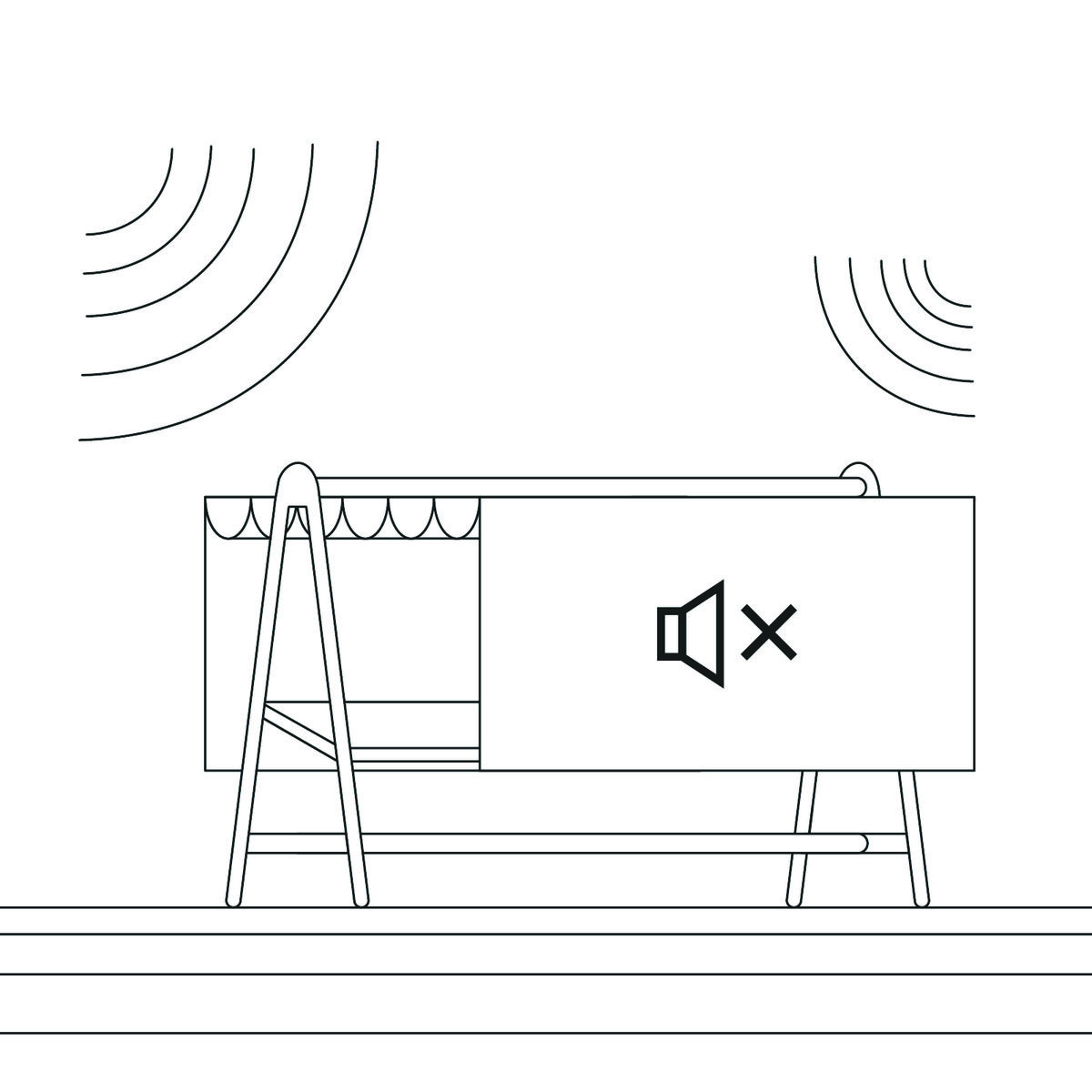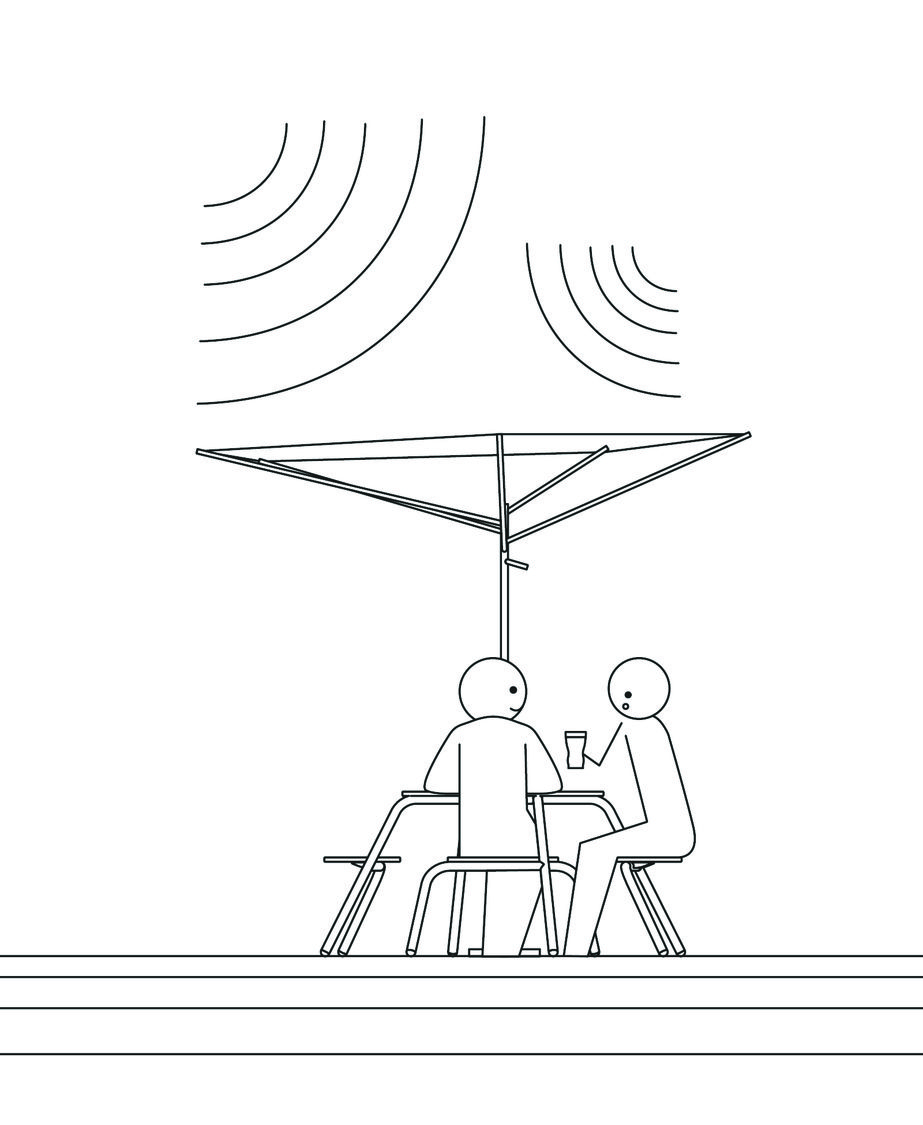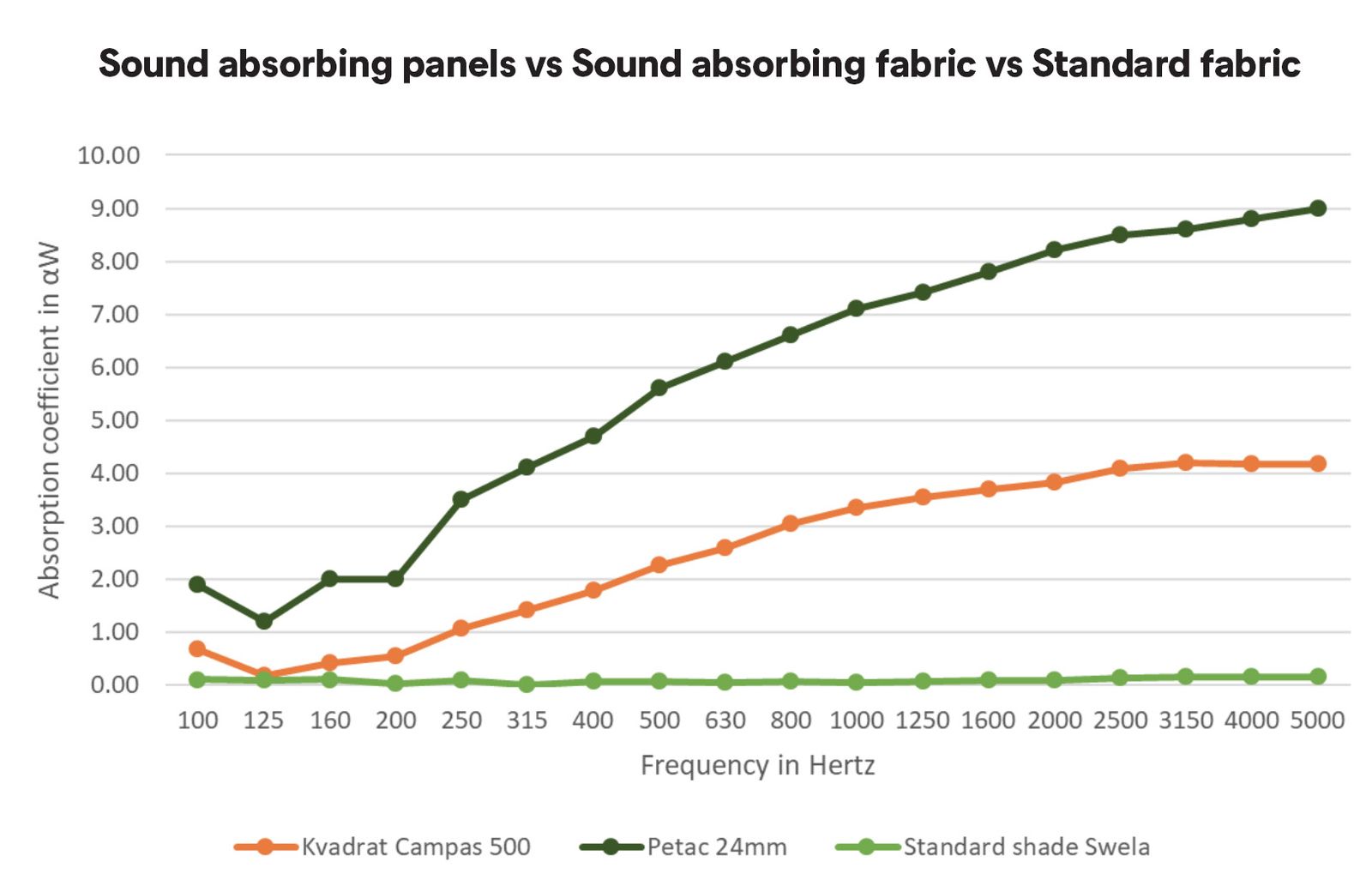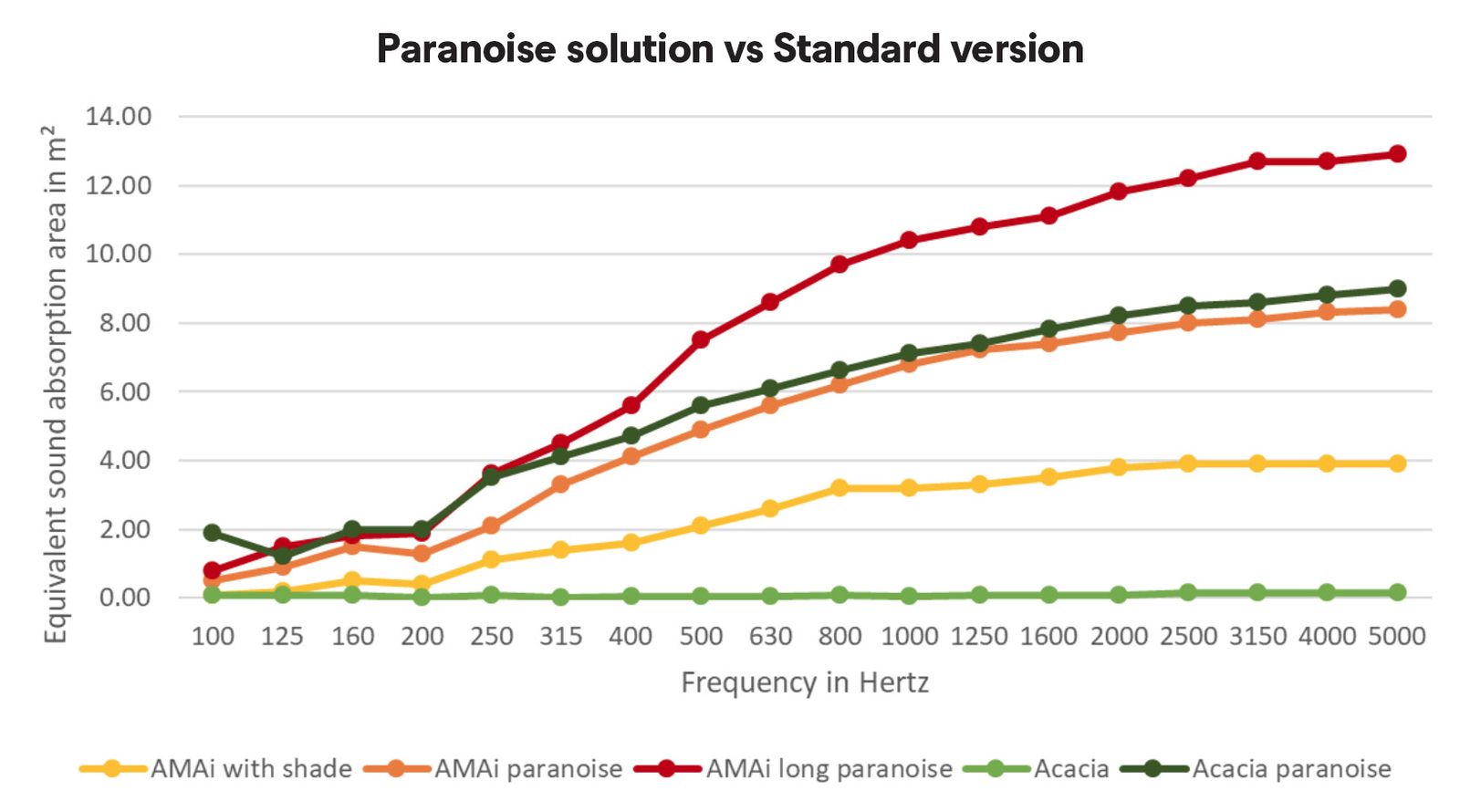Indoors, there’s no need for a sunshade that offers protection from the sun. Instead, some protection from noise is most welcome. To solve this, Extremis has altered some of its parasols to new “paranoise” solutions. Using sound-absorbing fabrics as shade, Paranoise encourages conversations indoors with an outdoor look and feel.
Cut through the noise with Paranoise

Paranoise sets the tone
Tame noise distractions
In a space occupied by cabinets, furniture, and people, it can be difficult to find room for freestanding acoustic solutions. Since the AMAi paranoise shade is placed above the AMAi tabletop, as a shade would be outdoors, it doesn’t take up any desk space and allows people to communicate freely.
The AMAi paranoise adds to a biophilic design where office workers will feel at ease. In spaces with high ceilings, an indoor shade creates a shelter that offers intimacy. It brings the outdoor elements indoors and thus blurs the boundaries between inside and outside.
The Acacia paranoise is an acoustic upgrade to the Acacia shade. This movable and eccentric piece clearly resembles the African acacia trees, making it a statement piece in any space. While the savanna trees offer shade and food, this asymmetrical design counteracts noise. When combined with the Virus table, the voices of those sitting down are reflected on the tabletop to be absorbed by the acoustic panels above.
These sound solutions capture sound waves going upwards and prevent sound from traveling further in a space, especially with a high ceiling.

“Outdoor sun protection with a Parasol, indoor noise protection with a Paranoise.”
Crashing sound waves
Or absorbing them?
Sound is made of vibrations that travel through the air, away from the source. The higher the frequency of vibrations, the shorter the soundwave and the higher the pitch. Vice versa, the lower the pitch, the fewer vibrations and the longer the soundwave will be. The difference in pitches is expressed in Hertz, with the range of human voices laying between 100 and 1100 Hz.
A sound wave bounces around the space on clean surfaces and reverberates until it drops dead. The reverberation time causes background noise and a bad echo, which is often interpreted as an uncomfortable noise. Instead, sound-absorbing material dampens the energy of the sound wave rather than reflecting it. This way, sound waves stop traveling through the space, reducing echo and noise pollution.


Furniture never sounded so good
To measure the impact of our sound-absorptive products, we took them to an official noise lab. Inside a reverberation room, the amount of sound absorption of the acoustic material was measured, which resulted in the precise absorption coefficient and equivalent sound absorption.
The absorption coefficient, αW, indicates the percentage of sound absorption per m² of the different acoustic materials. The equivalent sound absorption indicates the area in m² or ft² that absorbs sound thanks to the addition of the product. In a good acoustic environment, at least 20% of the surface should consist of an absorbing surface. The amount of absorptive material needed will depend on the volume of the room, the existing materials, objects, and people in it.
|
Product |
Absorption coefficient |
Equivalent sound absorption area per product |
|
AMAi paranoise shade |
0.70 αW / Class C |
6.80 m² / 73.19 ft² |
|
AMAi long paranoise shade |
0.70 αW / Class C |
10.40 m² / 111.94 ft² |
|
AMAi long paranoise shade folded |
0.70 αW / Class C |
9.20 m² / 99.03 ft² |
|
Acacia paranoise |
1.00 αW / Class A |
7.10 m² / 76.42 ft² |
